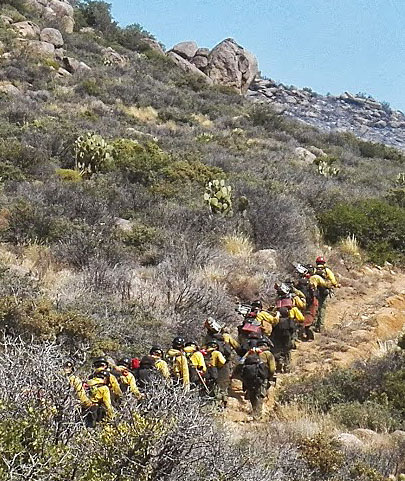Author: Bill Gabbert
January was 5th driest on record
According to NOAA’s National Climatic Data Center January was the fifth driest January on record in the contiguous United States.
More details from NOAA:
The average January national precipitation total was 1.32 inches, 0.90 inch below the 20th century average, ranking as the fifth-driest January on record and the driest since 2003. Dry conditions dominated much of the western and southern United States, with severe-to-exceptional drought engulfing much of California and Nevada. Numerous winter storms impacted the central and eastern U.S., bringing above-average snowfall but closer-to-average total precipitation for the month.
“Fire, floods, and pestilence” in Wales
A fire on the west coast of Wales in the UK caused some concern for residents near Aberystwyth on Friday. It looks fairly impressive In the above video as strong winds pushed it across a bog, but fire officials said it only burned about one hectare (2.5 acres).
A resident said:
Well I think we’ve had about everything now. We’ve had the fire, the floods, and the pestilence.
Thanks and a hat tip go out to Shaun.
Arizona releases statements from Blue Ridge Hotshots about Yarnell Hill Fire

Written statements that members of the Blue Ridge Hotshots provided about the Yarnell Hill Fire have been released by the Industrial Commission of Arizona. The documents, even though they are heavily redacted, provide more information about what happened on June 30, 2013 before and after 19 members of the Granite Mountain Hotshots were overrun by flames and killed on the fire.
The statements from approximately 12 members of the crew provide more insight about what the Blue Ridge Hotshots were doing that day on the fire, including some of their communications with the Granite Mountain Hotshots.
The general atmosphere on the fire that day, according to how we interpreted some of the statements, was chaos and disorganization.
- Neither of the two hotshot crews received a briefing that morning.
- Blue Ridge never really had a significant assignment during their one shift on the fire, other than prepping a dozer line for 30 to 65 minutes, and one person from the crew who worked with a dozer that originally did not have a radio.
- When Blue Ridge had to disengage and move to a safety zone, there were “still people milling about in town” (Yarnell). At about 1600 some of the residents, who had no information about the fire, asked crewmembers why they were leaving.
- There was a “debate” on the radio about the border between two geographical divisions. (Other reports confirm this, and the fact that one of the Division Supervisors left the field and did not return.)
- Firefighters working on the north side of the fire, far away from where the fatal entrapment occurred, were:
…burning around structures and having to use alternate escape route since some have been compromised.
As Blue Ridge was forced to leave the fire and was heading toward a safety zone they:
…find engine crews hiking out and we urge them to move as fast as they can.
The first of the statements mentions what appear to be communications with the Granite Mountain Hotshots at some time before 1615, telling them they are moving Granite Mountain’s crew carriers for them so that they would not be consumed by the fire, and informing them of the current fire behavior:
…I explain that we will keep their rigs with us too because things are very dynamic now, and [redacted] mentions that they are trying to come down off the hill, he mentions traveling through the black.
And later at 1655:
Radio traffic is overheard on A/G or TAC about Granite Mountain IHC needing to deploy shelters and they were in the process of cutting deployment site and trying to burn out around it. No other radio traffic is heard from Granite Mountain over TAC or A/G, we arrive at the Ranch House Restaurant staging area and I jump in Granite Mountain’s chase rig and try to listen on their crew channel and all I hear is a keyed mic, I try to raise them but with no success. I tell [redacted] to sit in the truck and monitor their crew channel for any traffic.
Comments that our readers leave about these statements will be allowed as long as our rules about commenting are respected. If there is a problem, we will close this article to comments.
The entire document can be downloaded, but be aware that it is a huge 18MB file.
Wildfire briefing, February 14, 2014

Police investigating 14 suspicious fires in Victoria
Police and fire investigators in Victoria, Australia are looking carefully at 14 fires that occurred over the last week for which arson is suspected. In over 400 fires since Thursday of last week, homes, animals, and crops have been destroyed or killed. A radio and print ad campaign will urge residents to report any suspicious activity to Crime Stoppers.
Wild meteorology terms go mainstream
Melissa Mahony has written an op-ed for livescience.com in which she examines some interesting and sometimes complex scientific weather terms that have crept into the mainstream over the last year or so. Ms. Mahony goes into a little detail about each one, but here is the list… how many are you familiar with?
- Polar vortex
- Blocking pattern
- Derecho
- Firenado/Firewhirl (“firenado” tag at Wildfire Today)
- Flash freeze
- Frost quake
- Haboob
- Heat Burst
- Megafire (a search at Wildfire Today for “megafire”)
- Snow drought
- Ice balls
Doc Hastings, of “Cantwell-Hastings Bill”, to retire

One of the two federal legislators who deserve most of the blame for passing the infamous Cantwell-Hastings Bill, which did irreparable harm to the process of learning lessons after wildfire accidents, is retiring.
The bill was sponsored by Senator Maria Cantwell and U.S. Representative Doc Hastings, and became Public Law 107-203 in 2002. It includes this passage:
In the case of each fatality of an officer or employee of the Forest Service that occurs due to wildfire entrapment or burnover, the Inspector General of the Department of Agriculture shall conduct an investigation of the fatality. The investigation shall not rely on, and shall be completely independent of, any investigation of the fatality that is conducted by the Forest Service.
The Cantwell-Hastings bill, signed into law in 2002, was a knee-jerk reaction to the fatalities on the Thirtymile fire the previous year. The Department of Agriculture’s Inspector General’s office had no experience or training in the suppression or investigation of wildland fires. They are much more likely to be investigating violations at a chicken ranch than evaluating fire behavior and tactical decisions at a wildfire. The goal of the Inspector General investigation would be to determine if any crimes were committed, so that a firefighter could be charged and possibly sent to prison.
After the bill was passed, a firefighter on the Thirtymile Fire was charged with 11 felonies, including four counts of manslaughter. Now firefighters have to lawyer-up after an accident and they sometimes do everything they can to avoid talking to investigators. After the 19 fatalities on the Yarnell Hill fire, the U.S. Forest Service prohibited their employees from providing information to one of the investigation teams, a decision that may have been a result of the environment created by Cantwell-Hastings. Lessons are now much more difficult to learn.
The Cantwell-Hastings Bill and Public Law 107-203 need to be repealed, or at least modified to more resemble the investigations that the military conducts following aviation accidents regulated by law,10 U.S.C. 2254(d). More information about this procedure is at Wildfire Today.
Wildfire briefing, February 13, 2014
Washington firefighter shocked by powerline after all-clear given by power company
A firefighter in Washington state was shocked by a downed powerline after the line was checked and declared safe by power company employees.
Ty N. Schoenwald, 22, a Washington State University student and volunteer firefighter in Benton County received a severe electric shock through indirect contact with the poweline that was on the ground. Benton Public Utility District personnel had checked the line before firefighters took suppression action and gave clearance for firefighters to enter the area to fight a vegetation fire that was most likely started by the power line.
Mr. Schoenwald had to be revived by CPR and a defibrillator. The accident occurred on Wednesday and he could be released from the hospital as early as today, Thursday.
Snowy River Fire Complex, Australia

The infrared image above shows the Snowy River Complex Fire northeast of Melbourne in Australia, which has burned about 130,000 hectares (321,000 acres). The Complex is a result of two fires in the Deddick Valley and Goongerah areas that are being managed as one.
Austin may install fire detection cameras
A year ago Wildfire Today told you that West Lake Hills, a city near Austin, Texas, was going to install a camera system to detect wildfires. That device is up and running and passed its first test in November. Now the city of Austin is considering building a network of the automatic fire detection devices.
The video below from myfoxaustin provides the details:
UPDATE February 14, 2014: Alfred Stanley, President of FireWatch Texas, contacted us, saying a better, more accurate report on what the two cities are doing is at KEYE TV. The video can’t be embedded, but you can see it here.
A company explores placing cell sites on balloons

Oceus Network has successfully tested a 4G LTE base station attached to weather balloons in Colorado. Oceus used balloons from Space Data to send the equipment up to 70,000 feet where theoretically it could communicate within a 62 mile radius. Space Data has been sending balloons into the sky for years to provide data communications in remote areas. The equipment ascends into the upper atmosphere and then is recovered when it returns to Earth by parachute.
Oceus is exploring not just free-floating high atmosphere balloons, but using lower altitude platforms such as helicopters, fixed wing aircraft, Unmanned Aircraft Systems, or tethered balloons. Some of their research is in response to an FCC initiative to explore communication methods for first responders following natural disasters that occur in remote areas or when conventional infrastructure is damaged.
This system, when perfected, could supply cell service to wildland firefighters in remote areas who not only need voice communications, but need ever increasing data connections for accessing the internet to run systems such as the Nextgeneration Incident Command System.




